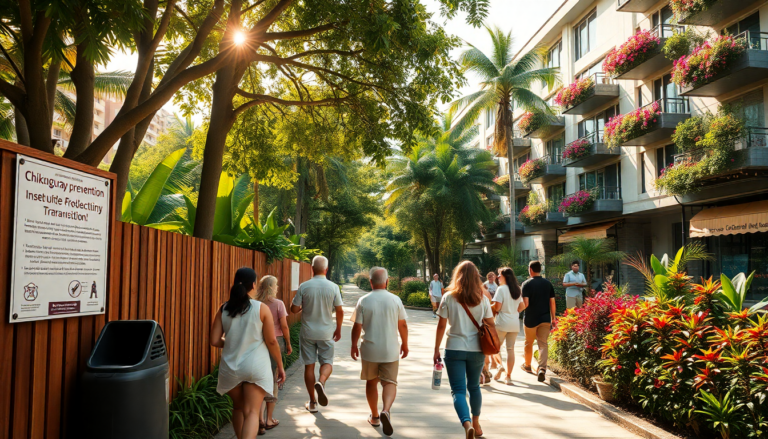Argomenti trattati
Chikungunya disease, caused by the chikungunya virus, often brings with it a wave of pain and discomfort that many find hard to shake off. This viral illness, which spreads through the bites of infected mosquitoes—particularly from the Aedes species—has made its presence known in numerous places around the globe. From Africa to the Americas, Asia to Europe, and even the serene islands of the Caribbean, as well as the Indian and Pacific Oceans, chikungunya is a reminder of how deeply our health is intertwined with our environment. Just the mention of this disease can invoke images of fever and joint distress, making one wonder: how can something so small have such a profound impact on our lives?
Symptoms and the Journey of Infection
The journey of chikungunya typically begins with what seems like an innocent mosquito bite. Within 3 to 7 days post-bite, symptoms often make their unwelcome appearance, starting with fever and debilitating joint pain. This joint discomfort isn’t just a passing annoyance; it can linger for long periods, casting a shadow over the daily lives of those affected. The heat of fever combined with the dull ache of muscle pain marks the beginning of a complex tapestry of symptoms that may also include headaches, joint swelling, and rashes. It’s a tough ride, isn’t it?
While most people find relief and recover within a week, for others, the aftermath can be a relentless cycle of severe joint pain that stretches on for months or even years. Such persistent symptoms can transform everyday tasks into formidable challenges. Grasping the nature of these symptoms is crucial—not just for awareness but also to cultivate empathy for those living with this condition. How can we better support them in our communities?
Identifying Vulnerable Populations
In our exploration of chikungunya, it’s vital to highlight the populations at greater risk. Infants born to infected mothers, older adults—especially those over 65—and individuals with underlying health issues like diabetes or heart disease are particularly vulnerable to more severe manifestations of the disease. Although fatalities from chikungunya are rare, the potential for debilitating pain and prolonged recovery is a reality that we must acknowledge. Isn’t it important that we all take a moment to consider how these factors affect those around us?
As we deepen our understanding of this disease, we must remember that prevention and awareness are our best defenses. The more informed we are about how chikungunya impacts these vulnerable groups, the better equipped we become to support and protect them within our communities. What steps can we take together?
Current Approaches and Considerations
At present, there’s no specific treatment for chikungunya, which only heightens the need for effective prevention strategies. The lack of targeted therapies means that individuals often have to rely on supportive care to alleviate their symptoms. This highlights a vital lesson: the importance of preventive measures—like controlling mosquito populations and safeguarding oneself from bites—cannot be overstated. Is there a better time than now to take action?
In conclusion, understanding chikungunya goes beyond simply recognizing symptoms or identifying who is at risk. It’s about fostering a collective awareness that encourages us to engage responsibly with our environment. As we cultivate this knowledge, we enrich our communal fabric and empower each other to take proactive steps against such diseases. The journey of awareness continues with each conversation, every shared story, and our commitment to a healthier future. How will you contribute to this important dialogue?

